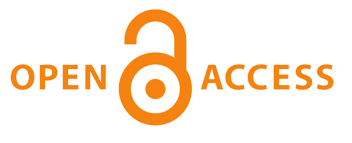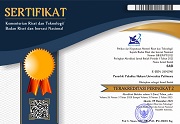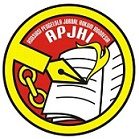Implementation Double-Track System Criminal Sanctions and Rehabilitation Against Narcotic Abusers
 )
)
(1) Faculty of Law August 17 1945 University of Surabaya, Surabaya, Indonesia
(2) Faculty of Law August 17 1945 University of Surabaya, Surabaya, Indonesia

 Corresponding Author
Corresponding Author
Abstract
Introduction: The application of sanctions is regulated in Law no. 35 of 2009 concerning Narcotics, which tends to impose criminal sanctions, does not have an impact, in fact there are more narcotics abusers. In accordance with the mandate of Law no. 35 of 2009 concerning narcotics, addicts and victims of narcotics abuse are entitled to rehabilitation, both medical rehabilitation and social rehabilitation. In general, addicts and victims of narcotics abuse have not been able to access rehabilitation services, especially addicts and victims of narcotics abuse who are in prisons or detention centers.
Purposes of the Research: focus of the formulation in this research is How to Analyze the Meaning of Medical Rehabilitation Obligations for Narcotics Addicts?.
Methods of the Research: The method used in this research is the normative juridical method and the law approach as well as the conceptual approach. They are in medical rehabilitation and/or social rehabilitation institutions.
Results of the Research: Researchers suggest to the Government and the DPR to add explanations for narcotics addicts in Article 54 of Law Number 35 of 2009 concerning Narcotics, by including the amount of medical rehabilitation financing provided to narcotics addicts in Law Number 35 of 2009 concerning Narcotics. Prior to the promulgation of the amount of medical rehabilitation financing, regarding the provision of medical rehabilitation for narcotics addicts it will be easier to implement, and for the public to increase participation in the prevention of narcotics addicts and accessibility to the settlement of litigation and non-litigation cases.
Keywords
DOI
10.47268/sasi.v28i3.974
Published
2022-10-13
How To Cite
@article{SASI974,
author = {Muhamad Chaidar and Budiarsih Budiarsih},
title = {Implementation Double-Track System Criminal Sanctions and Rehabilitation Against Narcotic Abusers},
journal = {SASI},
volume = {28},
number = {3},
year = {2022},
keywords = {Addict; Medical Rehabilitation; Narcotics},
abstract = {Introduction: The application of sanctions is regulated in Law no. 35 of 2009 concerning Narcotics, which tends to impose criminal sanctions, does not have an impact, in fact there are more narcotics abusers. In accordance with the mandate of Law no. 35 of 2009 concerning narcotics, addicts and victims of narcotics abuse are entitled to rehabilitation, both medical rehabilitation and social rehabilitation. In general, addicts and victims of narcotics abuse have not been able to access rehabilitation services, especially addicts and victims of narcotics abuse who are in prisons or detention centers.Purposes of the Research: focus of the formulation in this research is How to Analyze the Meaning of Medical Rehabilitation Obligations for Narcotics Addicts?.Methods of the Research: The method used in this research is the normative juridical method and the law approach as well as the conceptual approach. They are in medical rehabilitation and/or social rehabilitation institutions.Results of the Research: Researchers suggest to the Government and the DPR to add explanations for narcotics addicts in Article 54 of Law Number 35 of 2009 concerning Narcotics, by including the amount of medical rehabilitation financing provided to narcotics addicts in Law Number 35 of 2009 concerning Narcotics. Prior to the promulgation of the amount of medical rehabilitation financing, regarding the provision of medical rehabilitation for narcotics addicts it will be easier to implement, and for the public to increase participation in the prevention of narcotics addicts and accessibility to the settlement of litigation and non-litigation cases.},
issn = {2614-2961}, pages = {379--389} doi = {10.47268/sasi.v28i3.974},
url = {https://fhukum.unpatti.ac.id/jurnal/sasi/article/view/974}
}
Journal Article
Andari, Soetji. “Efektivitas Pelaksanaan Rehabilitasi Terhadap Korban Penyalahgunaan Narkotika.” Jurnal Penelitian Kesejahteraan Sosial 18, no. 3 (2019): 245–56.
Appludnopsanji, Appludnopsanji, and Ani Purwanti. “Double Track Criminal System of Indonesia: Criminal Sanction and Chemical Castration Treatment Policy on Pedhofilia?” Diponegoro Law Review 6, no. 1 (n.d.): 17–32.
Boldt, Richard C. “Rehabilitative Punishment and the Drug Treatment Court Movement.” Wash. ULQ 76 (1998): 1205.
Compton, Wilson M, and Nora D Volkow. “Abuse of Prescription Drugs and the Risk of Addiction.” Drug and Alcohol Dependence 83 (2006): S4–7.
Diputra, Ida Bagus Putu Swadharma. “Kebijakan Rehabilitasi Terhadap Penyalah Guna Narkotika Pada Undang Undang Nomor 35 Tahun 2009 Tentang Narkotika.” Jurnal Magister Hukum Udayana 2, no. 1 (2012): 44098.
Elpina, Elpina, and Mariah Sonanggok Purba. “The Narcotics Abuse Term Weaknesses in Criminal Law Enforcement Of Indonesia.” Jurnal Pembaharuan Hukum 8, no. 1 (2021): 34–47.
Fajar, Mohamad. “Penerapan Rehabilitasi Medis Dan Rehabilitasi Sosial Atas Penyalahgunaan Narkotika Bagi Diri Sendiri.” Jurnal Sosial Teknologi 2, no. 5 (2022): 406–17.
Fajrin, Yaris Adhial, and Ach Faisol Triwijaya. “Arah Pembaharuan Hukum Pidana Indonesia Di Tengah Pluralisme Hukum Indonesia.” Ekspose: Jurnal Penelitian Hukum Dan Pendidikan 18, no. 1 (2019): 734–40.
Goldman, Alan H. “Toward a New Theory of Punishment.” Law and Philosophy 1, no. 1 (1982): 57–76.
Hamamah, Fatin. “Rehabilitation On Victims Of Drugs Abuse In Judicial Development.” International Journal of Law Reconstruction 5, no. 2 (2021): 354–66.
Hidayatun, Siti, and Yeni Widowaty. “Konsep Rehabilitasi Bagi Pengguna Narkotika Yang Berkeadilan.” Jurnal Penegakan Hukum Dan Keadilan 1, no. 2 (2020).
Mahesti, Ranu. “Pendampingan Rehabilitasi Bagi Pecandu Dan Korban Penyalahgunaan Narkotika.” Lembaran Masyarakat: Jurnal Pengembangan Masyarakat Islam 4, no. 1 (2018): 51–69.
Mulyana, Dewi Khoer, Hendi Suhendraya Muchtar, and Sayid Muhammad Rifqi Noval. “Social Rehabilitation Management For Victims Of Drugs Abuse Through Vocational Education.” International Journal of Educational Research & Social Sciences 3, no. 2 (2022): 690–701.
Muslikan, Muslikan, and Muhammad Taufiq. “Pelaksanaan Assesmen Tentang Rehabilitasi Terhadap Korban Penyalahgunaan Narkotika Ditinjau Dari Peraturan Perundang-Undangan.” Jurnal Ilmiah Living Law 11, no. 1 (2019): 61–80.
Nawawi, Jumriani, Slamet Sampurno, M Syukri Akub, and Nur Azisa. “Reformulation of Medical Rehabilitation against Victims of Narcotics Abuse in Indonesia.” Medico Legal Update 21, no. 1 (2021): 401–5.
Nuryanto, Carto. “Reconstruction Of The Criminal Sanction Policy And Action (Double Track System) In Law Enforcement For Narcotic Crime Prevention Reffered To Religious Justice.” Jurnal Pembaharuan Hukum 5, no. 3 (2018): 339–51.
Probosiwi, Ratih, and Daud Bahransyaf. “Pecandu Narkoba, Antara Penjara Atau Rehabilitasi.” E-Journal Kemsos, Sosio Informa: Kajian Permasalahan Sosial Dan Usaha Kesejahteraan, 2014.
Safi’i, Muhammat Teguh, Jawade Hafidz, and Maryanto Maryanto. “The Policy Authority of Police in Implementing Rehabilitation Actions Ont Narcotics Users.” Law Development Journal 4, no. 1 (2022): 116–23.
Utama, Ahmad Aditya Putra, and Heru Suyanto. “Implementation of Double Track System in Conviction Towards Special Expertise Crime.” Ius Poenale 2, no. 1 (2021): 1–20.
Book
Ali, Mahrus. Dasar-Dasar Hukum Pidana. Sinar Grafika, 2022.
Campbell, Nancy D. Discovering Addiction: The Science and Politics of Substance Abuse Research. University of Michigan Press, 2007.
Hiariej, Eddy O S. Prinsip-Prinsip Hukum Pidana. Cahaya Atma Pustaka, 2016.
Muhammad Hatta, S H. Penegakan Hukum PenyalahgunaanNarkoba Di Indonesia. Prenada Media, 2022.
Paripurna, Amira, S H Astutik, S H Prilian Cahyani, L L M MH, Riza Alifianto Kurniawan, and MTCP SH. Viktimologi Dan Sistem Peradilan Pidana. Deepublish, 2021.
Priyatno, Dwidja. Sistem Pelaksanaan Pidana Penjara Di Indonesia. Refika Aditama, 2006.
Thesis, Web Page, and Others
Gatot Supramono. “Hukum Narkoba Indonesia,” 2004, 192.
Ismail, Weni Safitri, Erdianto Effendi, and Mexsasai Indra. “Perlindungan Terhadap Korban Sekaligus Pelaku Pada Tindak Pidana Penyalahgunaan Narkotika Berdasarkan Putusan Nomor. 104/Pid. B/2014/PN. BJ.” Riau University, 2016.
Laswati, Hening, Alit Pawana, and Lydia Arfianti. “Ilmu Kedokteran Fisisk Dan Rehabilitasi,” n.d.
Majid, Abdul. Bahaya Penyalahgunaan Narkoba. Alprin, 2020.
Marcos, Megawati. “Tinjauan Yuridis Tentang Pemidanaan Terhadap Pecandu Narkotika.” UAJY, 2014.
Prakoso, Meditiyo. “Konsep Perantara Tindak Pidana Narkotika Sebagai Tindak Pidana Transnasional Dalam Hukum Pidana Indonesia.” UNIVERSITAS AIRLANGGA, 2015.
Sakdiyah, Fasichatus. “Model Double Track System Pidana Terhadap Pelaku Penyalahgunaan Narkotika.” Universitas 17 Agustus 1945 Surabaya, 2021.
Sholehuddin, Muhammad. “Sistem Sanksi Dalam Hukum Pidana: Ide Dasar Double Track System & Implementasinya,” 2003.
Taxman, Faye S, and Steven Belenko. Implementing Evidence-Based Practices in Community Corrections and Addiction Treatment. Springer, 2011.
| Dublin Core | PKP Metadata Items | Metadata for this Document | |
| 1. | Title | Title of document | Implementation Double-Track System Criminal Sanctions and Rehabilitation Against Narcotic Abusers |
| 2. | Creator | Author's name, affiliation, country | Muhamad Chaidar; Faculty of Law August 17 1945 University of Surabaya, Surabaya; Indonesia |
| 2. | Creator | Author's name, affiliation, country |
Budiarsih Budiarsih; Faculty of Law August 17 1945 University of Surabaya, Surabaya; Indonesia  |
| 3. | Subject | Discipline(s) | |
| 3. | Subject | Keyword(s) | Addict; Medical Rehabilitation; Narcotics |
| 4. | Description | Abstract | Introduction: The application of sanctions is regulated in Law no. 35 of 2009 concerning Narcotics, which tends to impose criminal sanctions, does not have an impact, in fact there are more narcotics abusers. In accordance with the mandate of Law no. 35 of 2009 concerning narcotics, addicts and victims of narcotics abuse are entitled to rehabilitation, both medical rehabilitation and social rehabilitation. In general, addicts and victims of narcotics abuse have not been able to access rehabilitation services, especially addicts and victims of narcotics abuse who are in prisons or detention centers.Purposes of the Research: focus of the formulation in this research is How to Analyze the Meaning of Medical Rehabilitation Obligations for Narcotics Addicts?.Methods of the Research: The method used in this research is the normative juridical method and the law approach as well as the conceptual approach. They are in medical rehabilitation and/or social rehabilitation institutions.Results of the Research: Researchers suggest to the Government and the DPR to add explanations for narcotics addicts in Article 54 of Law Number 35 of 2009 concerning Narcotics, by including the amount of medical rehabilitation financing provided to narcotics addicts in Law Number 35 of 2009 concerning Narcotics. Prior to the promulgation of the amount of medical rehabilitation financing, regarding the provision of medical rehabilitation for narcotics addicts it will be easier to implement, and for the public to increase participation in the prevention of narcotics addicts and accessibility to the settlement of litigation and non-litigation cases. |
| 5. | Publisher | Organizing agency, location | Faculty of Law, Universitas Pattimura |
| 6. | Contributor | Sponsor(s) | DRPM Dikti; Faculty of Law August 17 1945 University of Surabaya, Surabaya |
| 7. | Date | (YYYY-MM-DD) | 2022-10-13 |
| 8. | Type | Status & genre | Peer-reviewed Article |
| 8. | Type | Type | |
| 9. | Format | File format | |
| 10. | Identifier | Uniform Resource Identifier | https://fhukum.unpatti.ac.id/jurnal/sasi/article/view/974 |
| 10. | Identifier | Digital Object Identifier | 10.47268/sasi.v28i3.974 |
| 11. | Source | Title; vol., no. (year) | SASI; Volume 28 Issue 3, September 2022 |
| 12. | Language | English=en | en |
| 13. | Relation | Supp. Files | |
| 14. | Coverage | Geo-spatial location, chronological period, research sample (gender, age, etc.) | |
| 15. | Rights | Copyright and permissions | Copyright: Authors who publish their manuscripts in this Journal agree to the following conditions: 1. The copyright in each article belongs to the author, as well as the right to patent. 2. Authors can enter into separate, additional contractual arrangements for the non-exclusive distribution of the journal's published version of the work (e.g., post it to an institutional repository or publish it in a book), with an acknowledgment of its initial publication in this journal. 3. Authors are permitted and encouraged to post their work online (e.g., in institutional repositories or on their website) before and during the submission process, as it can lead to productive exchanges, as well as earlier and greater citation of published work. 4. Authors have the right to self-archiving of the article (Author Self-Archiving Policy)
License: The SASI Journal is disseminated based on the Creative Commons Attribution-NonCommercial 4.0 International license terms. This license allows anyone to copy and redistribute this material in any form or format, compose, modify, and make derivatives of this material for any purpose. You cannot use this material for commercial purposes. You must specify an appropriate name, include a link to the license, and certify that any changes have been made. You can do this in a way that is appropriate but does not imply that the licensor supports you or your use.
|
Copyright (c) 2022 Muhamad Chaidar, Budiarsih Budiarsih

This work is licensed under a Creative Commons Attribution-NonCommercial 4.0 International License.

 : 2713 times
: 2713 times Download : 1184 times
Download : 1184 times
















